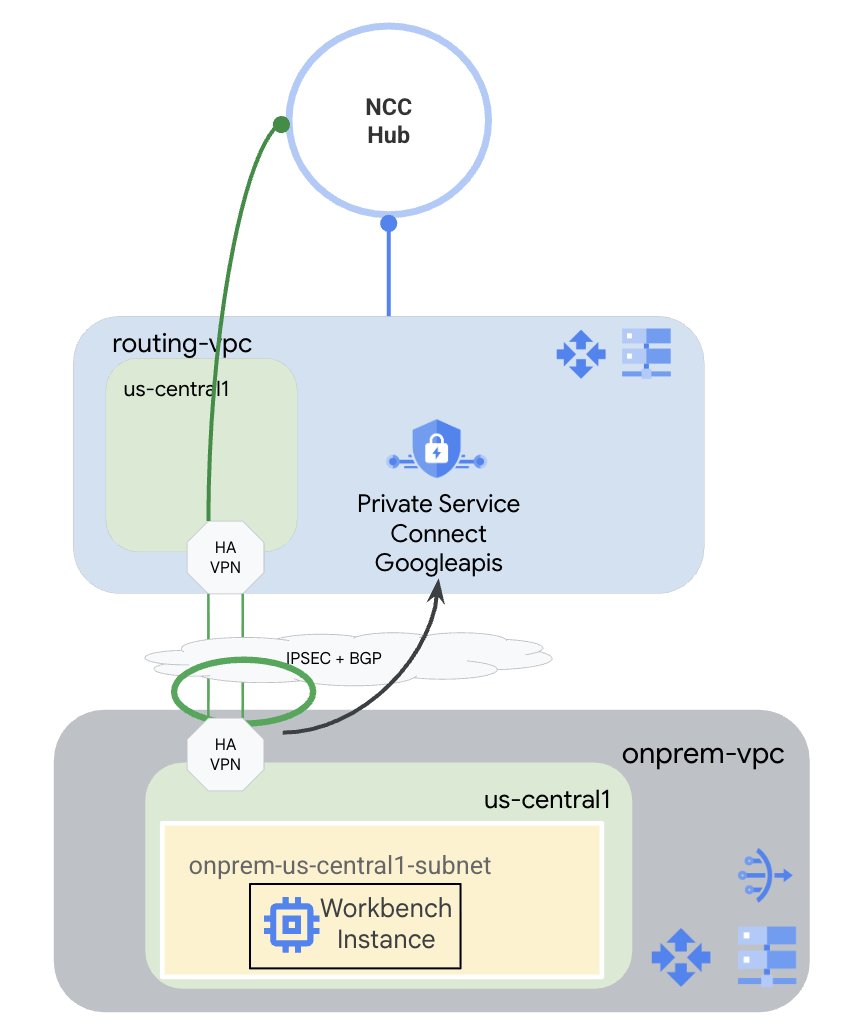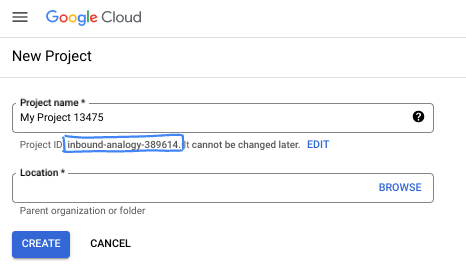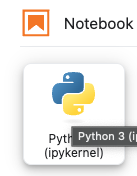1. מבוא
Private Service Connect for Google APIs (PSC) הוא יכולת של רשת Google Cloud שמאפשרת למשתמשים להגדיר גישה פרטית דרך נקודת קצה גלובלית של כתובת IP פרטית בתוך VPC. משתמשים שמריצים קוד או אפליקציות בצד הלקוח בסביבה היברידית שמחוברת ל-Google Cloud באמצעות VPN או Interconnect, משתמשים ב-PSC כדי לפתור בעיות ב-Google APIs דרך החיבור ההיברידי הפרטי הזה.
שירות PSC ל-Google APIs יכול לזהות דומיינים רבים ושונים. הרשימה המלאה שלהם מופיעה כאן. הדומיין שרוב ממשקי ה-API של Google משתמשים בו הוא <API>.googleapis.com. בנוסף לדומיין הזה, PSC מספק למשתמשים גם גרסה של googleapis.com שהיא <API>-<PSC-ENDPOINT-NAME>.**p.**googleapis.com. באמצעות הדומיין הזה, המשתמשים יכולים להגדיר אפליקציות לשימוש בנקודות קצה ספציפיות של PSC. תרחיש השימוש הנפוץ ביותר מאפשר למשתמשים לבחור אילו אפליקציות ישתמשו בנקודת הקצה של PSC כדי לנתב תנועה של Google API דרך החיבור ההיברידי, ובמקביל לאפשר לאפליקציות אחרות להמשיך לנתב תנועה לנקודת הקצה של ה-API הציבורי.
Gemini נכלל בחבילת המוצרים Vertex AI של Google Cloud, והוא מופיע ברשימת ממשקי ה-API של Google שאפשר לפתור בעיות בהם באמצעות PSC ל-Google APIs.
ב-codelab הזה תבנו סביבה היברידית מדומה, תארחו מופע של Workbench באופן מקומי ותריצו קוד Python של Gemini שיוכל לגשת ל-Gemini API באופן פרטי דרך HA VPN, ותתחברו לנקודת קצה של PSC ל-Google APIs.
מה תלמדו
- יוצרים מרכז NCC.
- הגדרת רשתות VPC מסוג Spokes במרכז NCC.
- יוצרים שער HA VPN ב-Cloud.
- הגדרת רכיבי Hybrid Spokes ב-NCC Hub.
- יוצרים PSC לנקודת קצה של Google APIs.
- הגדרת נתיב מותאם אישית דרך HA VPN.
- מגדירים אזור DNS של שותפות.
- הגדרת מכונה ב-Vertex Workbench
- מגדירים את קוד Python של Gemini כך שישתמש ב-PSC עבור נקודת קצה של Google APIs API.
מה צריך
- פרויקט ב-Google Cloud עם הרשאת 'בעלים' או הרשאת 'עריכה' מלאה.
2. טופולוגיה של Codelab

בשיעור הזה תשתמשו ב-Google Cloud כדי לדמות סביבה היברידית. יהיו שלבים ב-codelab הזה שספציפיים ל-Google Cloud, והם יהיו שונים אם תגדירו אותם מסביבה מקומית אמיתית. השלבים האלה יצוינו.
תצרו רכזת NCC עם רשת VPC מסוג Spoke לניתוב. ב-VPC הזה, יוגדר HA VPN ל-VPC המקומי, שמדמה סביבה מקומית. שירות ה-HA-VPN יוגדר כ-Hybrid Spoke ברכזת NCC. ברשת ה-VPC המקומית, תיצרו תת-רשת שתארח מכונת Workbench. תצטרכו גם ליצור Cloud NAT כדי להשתמש בו להורדת חבילות במופע של Workbench.
לבסוף, תיצרו אזור DNS peering עבור ה-VPC המקומי כדי שתוכלו להשתמש באזור הפרטי של Service Directory עבור p.googleapis.com שנוצר אוטומטית על ידי PSC for Google APIs.
3. הגדרה ודרישות
הגדרת סביבה בקצב אישי
- נכנסים ל-Google Cloud Console ויוצרים פרויקט חדש או משתמשים בפרויקט קיים. אם עדיין אין לכם חשבון Gmail או חשבון Google Workspace, אתם צריכים ליצור חשבון.



- שם הפרויקט הוא השם המוצג של המשתתפים בפרויקט הזה. זו מחרוזת תווים שלא נמצאת בשימוש ב-Google APIs. תמיד אפשר לעדכן את המיקום.
- מזהה הפרויקט הוא ייחודי לכל הפרויקטים ב-Google Cloud, והוא קבוע (אי אפשר לשנות אותו אחרי שהוא מוגדר). מסוף Cloud יוצר באופן אוטומטי מחרוזת ייחודית, ובדרך כלל לא צריך לדעת מה היא. ברוב ה-Codelabs, תצטרכו להפנות למזהה הפרויקט (בדרך כלל מסומן כ-
PROJECT_ID). אם אתם לא אוהבים את המזהה שנוצר, אתם יכולים ליצור מזהה אקראי אחר. אפשר גם לנסות שם משתמש משלכם ולבדוק אם הוא זמין. אי אפשר לשנות את הערך הזה אחרי השלב הזה, והוא יישאר כזה למשך הפרויקט. - לידיעתכם, יש ערך שלישי, מספר פרויקט, שחלק מממשקי ה-API משתמשים בו. במאמרי העזרה מפורט מידע נוסף על שלושת הערכים האלה.
- בשלב הבא, תצטרכו להפעיל את החיוב במסוף Cloud כדי להשתמש במשאבי Cloud או בממשקי API של Cloud. השלמת ה-codelab הזה לא תעלה לכם הרבה, אם בכלל. כדי להשבית את המשאבים ולמנוע חיובים נוספים אחרי שתסיימו את המדריך הזה, תוכלו למחוק את המשאבים שיצרתם או למחוק את הפרויקט. משתמשים חדשים ב-Google Cloud זכאים לתוכנית תקופת ניסיון בחינם בשווי 300$.
הפעלת Cloud Shell
אפשר להפעיל את Google Cloud מרחוק מהמחשב הנייד, אבל ב-codelab הזה תשתמשו ב-Google Cloud Shell, סביבת שורת פקודה שפועלת בענן.
ב-Google Cloud Console, לוחצים על סמל Cloud Shell בסרגל הכלים שבפינה הימנית העליונה:

יחלפו כמה רגעים עד שההקצאה והחיבור לסביבת העבודה יושלמו. בסיום התהליך, אמור להופיע משהו כזה:

המכונה הווירטואלית הזו כוללת את כל הכלים הדרושים למפתחים. יש בה ספריית בית בנפח מתמיד של 5GB והיא פועלת ב-Google Cloud, מה שמשפר מאוד את הביצועים והאימות ברשת. אפשר לבצע את כל העבודה ב-codelab הזה בדפדפן. לא צריך להתקין שום דבר.
4. לפני שמתחילים
הפעלת ממשקי API
ב-Cloud Shell, מוודאים שהפרויקט מוגדר בצורה נכונה ומגדירים את משתני הסביבה.
מ-Cloud Shell
gcloud config list project gcloud config set project <project-id> export project=$(gcloud config get-value project) export region=us-central1 export zone=$region-a echo $project echo $region echo $zone
מפעילים את כל ממשקי ה-API הנדרשים של Google בפרויקט.
מ-Cloud Shell
gcloud services enable compute.googleapis.com gcloud services enable networkconnectivity.googleapis.com gcloud services enable dns.googleapis.com gcloud services enable notebooks.googleapis.com gcloud services enable servicedirectory.googleapis.com gcloud services enable aiplatform.googleapis.com
5. יצירת רשתות VPC ותת-רשתות
יצירת רשתות
מ-Cloud Shell
gcloud compute networks create routing-vpc \
--subnet-mode=custom
מ-Cloud Shell
gcloud compute networks create onprem-vpc \
--subnet-mode=custom
gcloud compute networks subnets create onprem-$region-subnet \
--network=onprem-vpc \
--range=10.0.0.0/24 \
--region=$region
--enable-private-ip-google-access
יצירת Cloud Routers ו-Cloud NAT
יוצרים Cloud Router שישמש בשילוב עם HA VPN ב-routing-vpc.
מ-Cloud Shell
gcloud compute routers create routing-$region-cr \
--network=routing-vpc \
--region=$region \
--asn=64512
יוצרים Cloud Router שישמש בשילוב עם HA VPN ב-onprem-vpc.
מ-Cloud Shell
gcloud compute routers create onprem-$region-cr \
--network=onprem-vpc \
--region=$region \
--asn=64513
יוצרים Cloud Router שישמש בשילוב עם Cloud NAT ב-onprem-vpc.
מ-Cloud Shell
gcloud compute routers create onprem-$region-cr-4nat \
--network=onprem-vpc \
--region=$region
ה-Cloud NAT ב-onprem-vpc ישמש להורדת חבילות למופע Vertex AI Workbench שיוגדר בשלב מאוחר יותר.
מ-Cloud Shell
gcloud compute routers nats create onprem-$region-nat \
--router=onprem-$region-cr-4nat \
--region=$region \
--nat-all-subnet-ip-ranges \
--auto-allocate-nat-external-ips
6. יצירת Cloud HA-VPN
יוצרים את שערי ה-VPN.
מ-Cloud Shell
gcloud compute vpn-gateways create routing-gateway \ --network=routing-vpc \ --region=$region \ --stack-type=IPV4_ONLY
מ-Cloud Shell
gcloud compute vpn-gateways create onprem-gateway \ --network=onprem-vpc \ --region=$region \ --stack-type=IPV4_ONLY
יוצרים את מנהרות ה-VPN שמקורן ב-routing-vpc.
מ-Cloud Shell
gcloud compute vpn-tunnels create routing-to-onprem-tunnel0 \
--peer-gcp-gateway=onprem-gateway \
--region=$region \
--ike-version=2 \
--shared-secret=mysecret \
--router=routing-$region-cr \
--vpn-gateway=routing-gateway \
--interface=0
gcloud compute vpn-tunnels create routing-to-onprem-tunnel1 \
--peer-gcp-gateway=onprem-gateway \
--region=$region \
--ike-version=2 \
--shared-secret=mysecret \
--router=routing-$region-cr \
--vpn-gateway=routing-gateway \
--interface=1
יוצרים את מנהרות ה-VPN שמקורן ב-onprem-vpc.
מ-Cloud Shell
gcloud compute vpn-tunnels create onprem-to-routing-tunnel0 \
--peer-gcp-gateway=routing-gateway \
--region=$region \
--ike-version=2 \
--shared-secret=mysecret \
--router=onprem-$region-cr \
--vpn-gateway=onprem-gateway \
--interface=0
gcloud compute vpn-tunnels create onprem-to-routing-tunnel1 \
--peer-gcp-gateway=routing-gateway \
--region=$region \
--ike-version=2 \
--shared-secret=mysecret \
--router=onprem-$region-cr \
--vpn-gateway=onprem-gateway \
--interface=1
מגדירים סשנים של BGP לשתי המנהרות שמקורן ב-routing-vpc.
מ-Cloud Shell
gcloud compute routers add-interface routing-$region-cr \
--interface-name=routing-interface0 \
--ip-address=169.254.0.1 \
--mask-length=30 \
--vpn-tunnel=routing-to-onprem-tunnel0 \
--region=$region
gcloud compute routers add-bgp-peer routing-$region-cr \
--peer-name=routingtoonprem-bgp0 \
--interface=routing-interface0 \
--peer-ip-address=169.254.0.2 \
--peer-asn=64513 \
--region=$region
gcloud compute routers add-interface routing-$region-cr \
--interface-name=routing-interface1 \
--ip-address=169.254.1.1 \
--mask-length=30 \
--vpn-tunnel=routing-to-onprem-tunnel1 \
--region=$region
gcloud compute routers add-bgp-peer routing-$region-cr \
--peer-name=routingtoonprem-bgp1 \
--interface=routing-interface1 \
--peer-ip-address=169.254.1.2 \
--peer-asn=64513 \
--region=$region
מגדירים סשנים של BGP לשתי המנהרות שמקורן ב-onprem-vpc.
מ-Cloud Shell
gcloud compute routers add-interface onprem-$region-cr \
--interface-name=onprem-interface0 \
--ip-address=169.254.0.2 \
--mask-length=30 \
--vpn-tunnel=onprem-to-routing-tunnel0 \
--region=$region
gcloud compute routers add-bgp-peer onprem-$region-cr \
--peer-name=onpremtorouting-bgp0 \
--interface=onprem-interface0 \
--peer-ip-address=169.254.0.1 \
--peer-asn=64512 \
--region=$region
gcloud compute routers add-interface onprem-$region-cr \
--interface-name=onprem-interface1 \
--ip-address=169.254.1.2 \
--mask-length=30 \
--vpn-tunnel=onprem-to-routing-tunnel1 \
--region=$region
gcloud compute routers add-bgp-peer onprem-$region-cr \
--peer-name=onpremtorouting-bgp1 \
--interface=onprem-interface1 \
--peer-ip-address=169.254.1.1 \
--peer-asn=64512 \
--region=$region
עוברים לדף Network Connectivity > VPN במסוף ומוודאים שמנהרות ה-HA VPN והסשנים של BGP מוגדרים בצורה תקינה.
7. הגדרת רכזות ונקודות גישה של NCC
יצירת מרכז NCC
מ-Cloud Shell
gcloud network-connectivity hubs create ncc-hub \
--project="$project" \
--preset-topology="mesh"
יצירת רכזות NCC
ב-NCC gcloud, כל הרכזות צריכות להיות מוגדרות עם שמות נתיבים מלאים או עם כתובות URI.
מ-Cloud Shell
gcloud compute networks describe routing-vpc
שימו לב לנתיב המלא (URI) של routing-vpc עבור הפקודה הבאה.
פלט לדוגמה
autoCreateSubnetworks: false creationTimestamp: '2025-08-20T11:13:42.233-07:00' id: 'xxx' kind: compute#network name: routing-vpc networkFirewallPolicyEnforcementOrder: AFTER_CLASSIC_FIREWALL routingConfig: bgpBestPathSelectionMode: LEGACY routingMode: REGIONAL selfLink: https://www.googleapis.com/compute/v1/projects/$project/global/networks/routing-vpc selfLinkWithId: https://www.googleapis.com/compute/v1/projects/$project/global/networks/355666541188722361 x_gcloud_bgp_routing_mode: REGIONAL x_gcloud_subnet_mode: CUSTOM
הגדרת רשת מסוג Spoke לניתוב
מ-Cloud Shell
gcloud network-connectivity spokes linked-vpc-network create routing-vpc \
--hub=ncc-hub \
--vpc-network=projects/$project/global/networks/routing-vpc \
--global
מ-Cloud Shell
gcloud compute vpn-tunnels describe routing-to-onprem-tunnel0 --region=$region gcloud compute vpn-tunnels describe routing-to-onprem-tunnel1 --region=$region
שימו לב לנתיבים המלאים (URI) של מנהרות ה-VPN שמקורן ב-routing-vpc.
פלט לדוגמה
creationTimestamp: '2025-08-20T11:33:37.494-07:00' description: '' detailedStatus: Tunnel is up and running. id: 'xxx' ikeVersion: 2 kind: compute#vpnTunnel labelFingerprint: xxx localTrafficSelector: - 0.0.0.0/0 name: routing-to-onprem-tunnel0 peerGcpGateway: https://www.googleapis.com/compute/v1/projects/$project/regions/us-central1/vpnGateways/onprem-gateway peerIp: 34.153.54.166 region: https://www.googleapis.com/compute/v1/projects/$project/regions/us-central1 remoteTrafficSelector: - 0.0.0.0/0 router: https://www.googleapis.com/compute/v1/projects/$project/regions/us-central1/routers/routing-us-central1-cr selfLink: https://www.googleapis.com/compute/v1/projects/$project/regions/us-central1/vpnTunnels/routing-to-onprem-tunnel0 sharedSecret: '*************' sharedSecretHash: xxx status: ESTABLISHED vpnGateway: https://www.googleapis.com/compute/v1/projects/$project/regions/us-central1/vpnGateways/routing-gateway vpnGatewayInterface: 0 creationTimestamp: '2025-08-20T11:33:41.829-07:00' description: '' detailedStatus: Tunnel is up and running. id: 'xxx' ikeVersion: 2 kind: compute#vpnTunnel labelFingerprint: xxx localTrafficSelector: - 0.0.0.0/0 name: routing-to-onprem-tunnel1 peerGcpGateway: https://www.googleapis.com/compute/v1/projects/$project/regions/us-central1/vpnGateways/onprem-gateway peerIp: 34.153.246.117 region: https://www.googleapis.com/compute/v1/projects/$project/regions/us-central1 remoteTrafficSelector: - 0.0.0.0/0 router: https://www.googleapis.com/compute/v1/projects/$project/regions/us-central1/routers/routing-us-central1-cr selfLink: https://www.googleapis.com/compute/v1/projects/$project/regions/us-central1/vpnTunnels/routing-to-onprem-tunnel1 sharedSecret: '*************' sharedSecretHash: xxx status: ESTABLISHED vpnGateway: https://www.googleapis.com/compute/v1/projects/$project/regions/us-central1/vpnGateways/routing-gateway vpnGatewayInterface: 1
מ-Cloud Shell
gcloud network-connectivity spokes linked-vpn-tunnels create $region-vpn-spoke \
--hub=ncc-hub \
--vpn-tunnels=projects/$project/regions/$region/vpnTunnels/routing-to-onprem-tunnel0,projects/$project/regions/$region/vpnTunnels/routing-to-onprem-tunnel1 \
--region=$region
לפני שממשיכים, חשוב לוודא שכל המרכזים מוגדרים בצורה נכונה.
מ-Cloud Shell
gcloud network-connectivity hubs list-spokes ncc-hub
פלט לדוגמה
NAME: routing-vpc GROUP: default PROJECT: $project LOCATION: global TYPE: VPC_NETWORK STATE: ACTIVE STATE REASON: ETAG: 2 NAME: us-central1-vpn-spoke GROUP: default PROJECT: $project LOCATION: us-central1 TYPE: VPN_TUNNEL STATE: ACTIVE STATE REASON: ETAG:
8. הגדרת Private Service Connect לממשקי Google API
נקודות קצה של ממשקי Google API ב-PSC נוצרות מכתובות IP גלובליות שלא נמצאות בתת-רשת אזורית של VPC. כתובת ה-IP הגלובלית צריכה להיות שמורה במיוחד למטרה PRIVATE_SERVICE_CONNECT.
מ-Cloud Shell
gcloud compute addresses create psc-ip \ --global \ --purpose=PRIVATE_SERVICE_CONNECT \ --addresses=10.100.100.0 \ --network=routing-vpc
מ-Cloud Shell
gcloud compute forwarding-rules create psc4googep \ --global \ --network=routing-vpc \ --address=psc-ip \ --target-google-apis-bundle=all-apis \ --service-directory-registration=projects/$project/locations/$region
מ-Cloud Shell
gcloud compute routers update routing-$region-cr \ --project=$project \ --region=$region \ --advertisement-mode custom \ --set-advertisement-groups=ALL_SUBNETS \ --set-advertisement-ranges=10.100.100.0/32
מ-Cloud Shell
gcloud dns managed-zones create peeringzone \
--description="dns peer onprem to routing" \
--dns-name=p.googleapis.com \
--networks=onprem-vpc \
--target-network=routing-vpc \
--target-project=$project \
--visibility=private
9. הגדרת מכונה ב-Vertex Workbench
יוצרים חשבון שירות שישמש כזהות של מופע Workbench.
מ-Cloud Shell
gcloud iam service-accounts create workbench-sa \
--display-name="workbench-sa"
שימו לב לשם המלא של חשבון השירות והקצו לו את ההרשאה aiplatform.admin כדי להפעיל קריאות ל-Vertex AI/Gemini.
מ-Cloud Shell
gcloud iam service-accounts list
פלט לדוגמה
DISPLAY NAME: Compute Engine default service account EMAIL: xxx-compute@developer.gserviceaccount.com DISABLED: False DISPLAY NAME: workbench-sa EMAIL: workbench-sa@$project.iam.gserviceaccount.com DISABLED: False
חשוב להחליף את <your-project-id> במזהה הפרויקט בפועל. אי אפשר להשתמש כאן במשתנה $project בגלל המירכאות הנדרשות.
מ-Cloud Shell
gcloud projects add-iam-policy-binding $project --member='serviceAccount:workbench-sa@<your-project-id>.iam.gserviceaccount.com' --role='roles/aiplatform.admin' --condition=None
מ-Cloud Shell
gcloud workbench instances create workbench-$region --vm-image-project=cloud-notebooks-managed --vm-image-family=workbench-instances --location=$region-a --network=projects/$project/global/networks/onprem-vpc --subnet=projects/$project/regions/$region/subnetworks/onprem-$region-subnet --subnet-region=$region --disable-public-ip --service-account-email=workbench-sa@$project.iam.gserviceaccount.com
יכול להיות שהקצאת המשאבים של מופע Workbench תימשך יותר זמן מהזמן שבו פועלת פקודת gcloud.
10. בדיקת קוד Gemini
בממשק המשתמש, לוחצים על Open JupyterLab.

אחרי שנכנסים ל-JupyterLab, פותחים מחברת חדשה של Python 3.

מריצים את הקוד הבא ב-notebook. חשוב לעדכן את הקוד כך שיכלול את הפרויקט הספציפי שלכם ואת פרטי האזור.
מ-JupyterLab Notebook
pip install --upgrade google-genai
מפעילים מחדש את ליבת ה-notebook.

רושמים את נקודת הקצה של ה-API. בדוגמה הזו אנחנו משתמשים בנקודת הקצה של ה-API <YOUR_REGION>-aiplatform.googleapis.com. זו נקודת הקצה של ה-API הסטנדרטי ל-Vertex AI.
מ-JupyterLab Notebook
PROJECT_ID="YOUR_PROJECT_ID" # Google Cloud Project ID
LOCATION_ID="YOUR_REGION" # Enter Vertex AI Gemini region such a s us-central1
API_ENDPOINT="https://<YOUR_REGION>-aiplatform.googleapis.com" # API Endpoint
MODEL_ID="gemini-2.0-flash" # Gemini Model ID
from google import genai
from google.genai.types import (
GenerateContentConfig,
HarmBlockThreshold,
HarmCategory,
Part,
SafetySetting,
)
מ-JupyterLab Notebook
from google import genai
client= genai.Client(vertexai=True, project=PROJECT_ID, location=LOCATION_ID, http_options={'base_url': API_ENDPOINT})
prompt = "what weighs more, 1kg of feathers or 1kg of stones"
safety_settings = [
SafetySetting(
category=HarmCategory.HARM_CATEGORY_DANGEROUS_CONTENT,
threshold=HarmBlockThreshold.BLOCK_LOW_AND_ABOVE,
),
SafetySetting(
category=HarmCategory.HARM_CATEGORY_HARASSMENT,
threshold=HarmBlockThreshold.BLOCK_LOW_AND_ABOVE,
),
SafetySetting(
category=HarmCategory.HARM_CATEGORY_HATE_SPEECH,
threshold=HarmBlockThreshold.BLOCK_LOW_AND_ABOVE,
),
SafetySetting(
category=HarmCategory.HARM_CATEGORY_SEXUALLY_EXPLICIT,
threshold=HarmBlockThreshold.BLOCK_LOW_AND_ABOVE,
),
]
response = client.models.generate_content(
model=MODEL_ID,
contents=prompt,
config=GenerateContentConfig(
safety_settings=safety_settings,
),
)
# Response will be `None` if it is blocked.
print(response.text)
דוגמה לתגובה
This is a classic trick question! They both weigh the same: 1 kilogram. The difference is in the volume they occupy and the density of the materials.
שימו לב לשם ה-API שבו השתמשתם כשביצעתם את הקוד. YOUR_REGION-aiplatform.googleapis.com הוא שם ה-API שמוגדר כברירת מחדל ל-Vertex AI. צריך לשנות את שם ה-API ולהריץ את הקוד שוב. כדי לוודא שהקוד משתמש בנקודת הקצה של PSC, אפשר להריץ TCPdump במסוף במופע של Workbench.
הפעלת TCPdump ב-Terminal
פותחים חלון Terminal ב-Workbench בלחיצה על File (קובץ) > New (חדש) > Terminal (טרמינל).

אם אתם נתקלים בבעיות בתצוגת פלט טקסט בטרמינל, אתם צריכים לעדכן את ערכת הנושא של הטרמינל. כדי לעשות את זה, עוברים אל 'הגדרות' > 'עיצוב של מסוף' > 'בהיר' או 'כהה'.
מתוך Terminal
sudo tcpdump host 10.100.100.0
עדכון קוד Gemini
חוזרים למחברת, מעדכנים את נקודת הקצה של ה-API ומריצים שוב את הקוד. שימו לב ששינינו את נקודת הקצה של ה-API לכתובת <YOUR_REGION>-aiplatform**-psc4googep.p**.googleapis.com. הפורמט הזה תואם לפורמט ה-API הספציפי ל-PSC <service>-<endpointname>.p.googleapis.com.
מ-JupyterLab Notebook
API_ENDPOINT="https://<YOUR_REGION>-aiplatform-psc4googep.p.googleapis.com" # API Endpoint
מ-JupyterLab Notebook
from google import genai
from google.genai.types import (
GenerateContentConfig,
HarmBlockThreshold,
HarmCategory,
Part,
SafetySetting,
)
מ-JupyterLab Notebook
from google import genai
client= genai.Client(vertexai=True, project=PROJECT_ID, location=LOCATION_ID, http_options={'base_url': API_ENDPOINT})
prompt = "what weighs more, 1kg of feathers or 1kg of stones"
safety_settings = [
SafetySetting(
category=HarmCategory.HARM_CATEGORY_DANGEROUS_CONTENT,
threshold=HarmBlockThreshold.BLOCK_LOW_AND_ABOVE,
),
SafetySetting(
category=HarmCategory.HARM_CATEGORY_HARASSMENT,
threshold=HarmBlockThreshold.BLOCK_LOW_AND_ABOVE,
),
SafetySetting(
category=HarmCategory.HARM_CATEGORY_HATE_SPEECH,
threshold=HarmBlockThreshold.BLOCK_LOW_AND_ABOVE,
),
SafetySetting(
category=HarmCategory.HARM_CATEGORY_SEXUALLY_EXPLICIT,
threshold=HarmBlockThreshold.BLOCK_LOW_AND_ABOVE,
),
]
response = client.models.generate_content(
model=MODEL_ID,
contents=prompt,
config=GenerateContentConfig(
safety_settings=safety_settings,
),
)
# Response will be `None` if it is blocked.
print(response.text)
דוגמה לתגובה
They weigh the same. 1 kg is 1 kg, regardless of what it's made of.
בדיקת TCPdump
חוזרים לטרמינל ומחפשים קריאות לנקודת הקצה של PSC (10.100.100.0). מפסיקים את הפקודה TCPdump (Control+c)
פלט לדוגמה
listening on ens4, link-type EN10MB (Ethernet), snapshot length 262144 bytes 19:12:01.473886 IP workbench-us-central1.us-central1-a.c.xxx.internal.41886 > 10.100.100.0.https: Flags [S], seq 3367930834, win 65320, options [mss 1420,sackOK,TS val 2933602967 ecr 0,nop,wscale 7], length 0 19:12:01.476561 IP 10.100.100.0.https > workbench-us-central1.us-central1-a.c.xxx.internal.41886: Flags [S.], seq 1863301110, ack 3367930835, win 65535, options [mss 1366,sackOK,TS val 3004118895 ecr 2933602967,nop,wscale 8], length 0 19:12:01.476602 IP workbench-us-central1.us-central1-a.c.xxx.internal.41886 > 10.100.100.0.https: Flags [.], ack 1, win 511, options [nop,nop,TS val 2933602969 ecr 3004118895], length 0 19:12:01.477283 IP workbench-us-central1.us-central1-a.c.xxx.internal.41886 > 10.100.100.0.https: Flags [P.], seq 1:1573, ack 1, win 511, options [nop,nop,TS val 2933602970 ecr 3004118895], length 1572 19:12:01.478836 IP 10.100.100.0.https > workbench-us-central1.us-central1-a.c.xxx.internal.41886: Flags [.], ack 1573, win 1045, options [nop,nop,TS val 3004118898 ecr 2933602970], length 0 19:12:01.480181 IP 10.100.100.0.https > workbench-us-central1.us-central1-a.c.xxx.internal.41886: Flags [P.], seq 1:6041, ack 1573, win 1045, options [nop,nop,TS val 3004118899 ecr 2933602970], length 6040 19:12:01.480183 IP 10.100.100.0.https > workbench-us-central1.us-central1-a.c.xxx.internal.41886: Flags [P.], seq 6041:8378, ack 1573, win 1045, options [nop,nop,TS val 3004118899 ecr 2933602970], length 2337 19:12:01.480215 IP workbench-us-central1.us-central1-a.c.xxx.internal.41886 > 10.100.100.0.https: Flags [.], ack 6041, win 485, options [nop,nop,TS val 2933602973 ecr 3004118899], length 0 19:12:01.480225 IP workbench-us-central1.us-central1-a.c.xxx.internal.41886 > 10.100.100.0.https: Flags [.], ack 8378, win 473, options [nop,nop,TS val 2933602973 ecr 3004118899], length 0 19:12:01.482580 IP workbench-us-central1.us-central1-a.c.xxx.internal.41886 > 10.100.100.0.https: Flags [P.], seq 1573:1653, ack 8378, win 501, options [nop,nop,TS val 2933602975 ecr 3004118899], length 80
בוצע בהצלחה!
11. שלבים לניקוי
סוגרים את מחברת JupyterLab וחוזרים אל Cloud Shell. מוודאים שלא חלף הזמן הקצוב לשימוש ב-Cloud Shell. אם כן, מאפסים את המשתנים.
מ-Cloud Shell
gcloud config list project gcloud config set project <project-id> export project=$(gcloud config get-value project) export region=us-central1 export zone=$region-a echo $project echo $region echo $zone
מחיקת כל המשאבים.
מ-Cloud Shell
gcloud workbench instances delete workbench-$region --location=$zone -q gcloud iam service-accounts delete workbench-sa@$project.iam.gserviceaccount.com -q gcloud dns managed-zones delete peeringzone -q gcloud compute forwarding-rules delete psc4googep --global -q gcloud compute addresses delete psc-ip --global -q gcloud network-connectivity spokes delete $region-vpn-spoke --region=$region -q gcloud network-connectivity spokes delete routing-vpc --global -q gcloud network-connectivity hubs delete ncc-hub -q gcloud compute vpn-tunnels delete onprem-to-routing-tunnel1 --region=$region --project=$project -q gcloud compute vpn-tunnels delete onprem-to-routing-tunnel0 --region=$region --project=$project -q gcloud compute vpn-tunnels delete routing-to-onprem-tunnel1 --region=$region --project=$project -q gcloud compute vpn-tunnels delete routing-to-onprem-tunnel0 --region=$region --project=$project -q gcloud compute vpn-gateways delete onprem-gateway --region=$region --project=$project -q gcloud compute vpn-gateways delete routing-gateway --region=$region --project=$project -q gcloud compute routers nats delete onprem-$region-nat --router=onprem-$region-cr-4nat --region=$region -q gcloud compute routers delete onprem-$region-cr-4nat --region=$region -q gcloud compute routers delete onprem-$region-cr --region=$region -q gcloud compute routers delete routing-$region-cr --region=$region -q gcloud compute networks subnets delete onprem-$region-subnet --region=$region -q gcloud compute networks delete onprem-vpc -q gcloud compute networks delete routing-vpc -q
12. מעולה!
כל הכבוד, סיימתם את ה-Codelab.
מה למדנו
- יוצרים מרכז NCC.
- הגדרת רשתות VPC מסוג Spokes במרכז NCC.
- יוצרים שער HA VPN ב-Cloud.
- הגדרת רכיבי Hybrid Spokes ב-NCC Hub.
- יוצרים PSC לנקודת קצה של Google APIs.
- הגדרת נתיב מותאם אישית דרך HA VPN.
- מגדירים אזור DNS של שותפות.
- הגדרת מכונה ב-Vertex Workbench
- מגדירים את קוד Python של Gemini כך שישתמש ב-PSC עבור נקודת קצה של Google APIs API.

